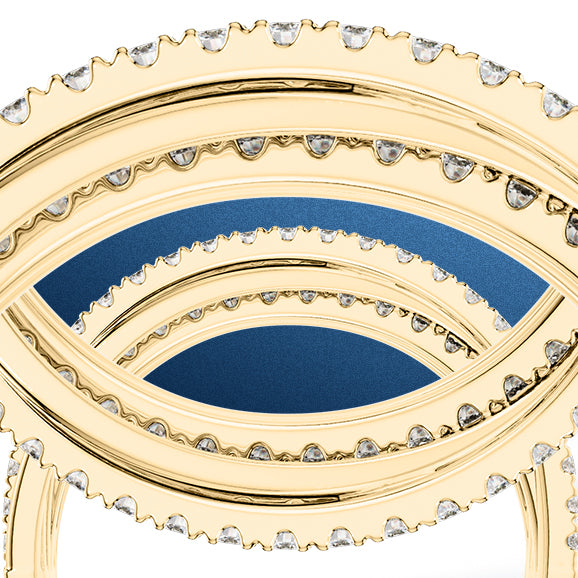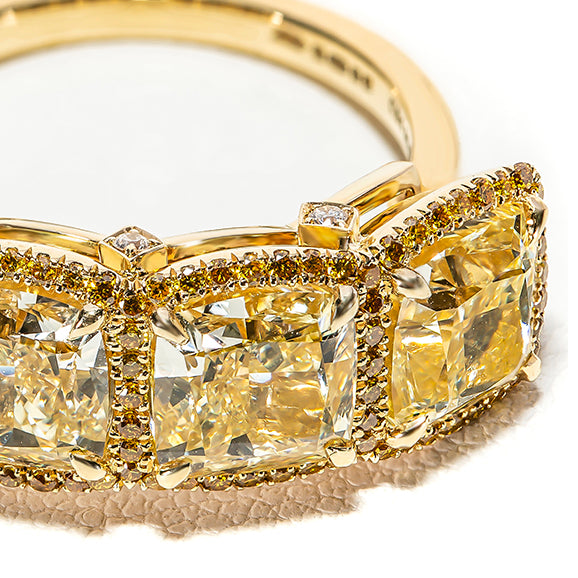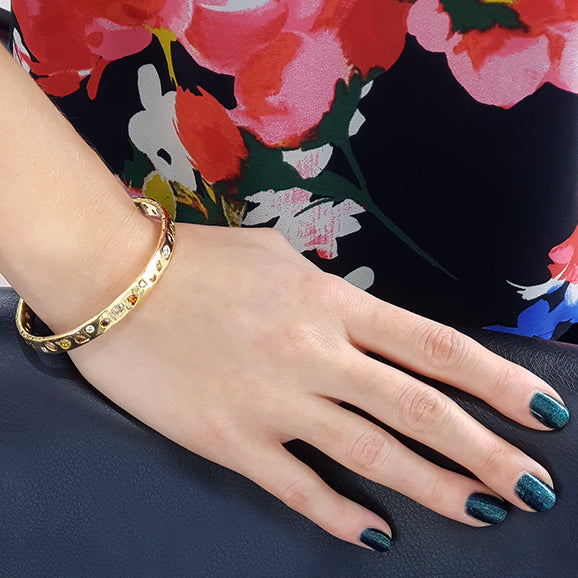Advantages
Yellow gold is the form of gold least likely to cause sensitivities or allergies in its wearers. It is the most hypoallergenic.
Yellow gold has, for many years, been the precious metal of choice for use in wedding bands and engagement rings. It is the metal that we associate with beautiful jewellery.
Yellow gold complements lower colour grade diamonds, enhancing the slight yellow hue of such diamonds.
Yellow gold has the most golden colour of all the forms of gold.
Yellow gold is an excellent match for darker and olive skin tones.
Yellow gold is the easiest to maintain of all the gold colours. There's no need to re-plate the metal to retain the desired colour (white gold). The metal will not change colour over time (rose gold).
It is hard to imitate the colour of gold with cheaper metals. If you have gold, then everyone knows it!
If repairs are needed to yellow gold, they can be carried out efficiently and invisibly.
Disadvantages
Yellow gold must be cleaned and polished to keep it looking good.
Particularly at the higher purity grades, 18 and 22ct, yellow gold is soft and subject to scratching and denting.
Some people see yellow gold as either flashy or old fashioned. Neither is true – of course!
Yellow gold can make diamonds look a little warmer, more yellow. This can be an issue when you have just bought a high colour grade diamond as it might make the lovely white gem look like a somewhat less expensive diamond.



